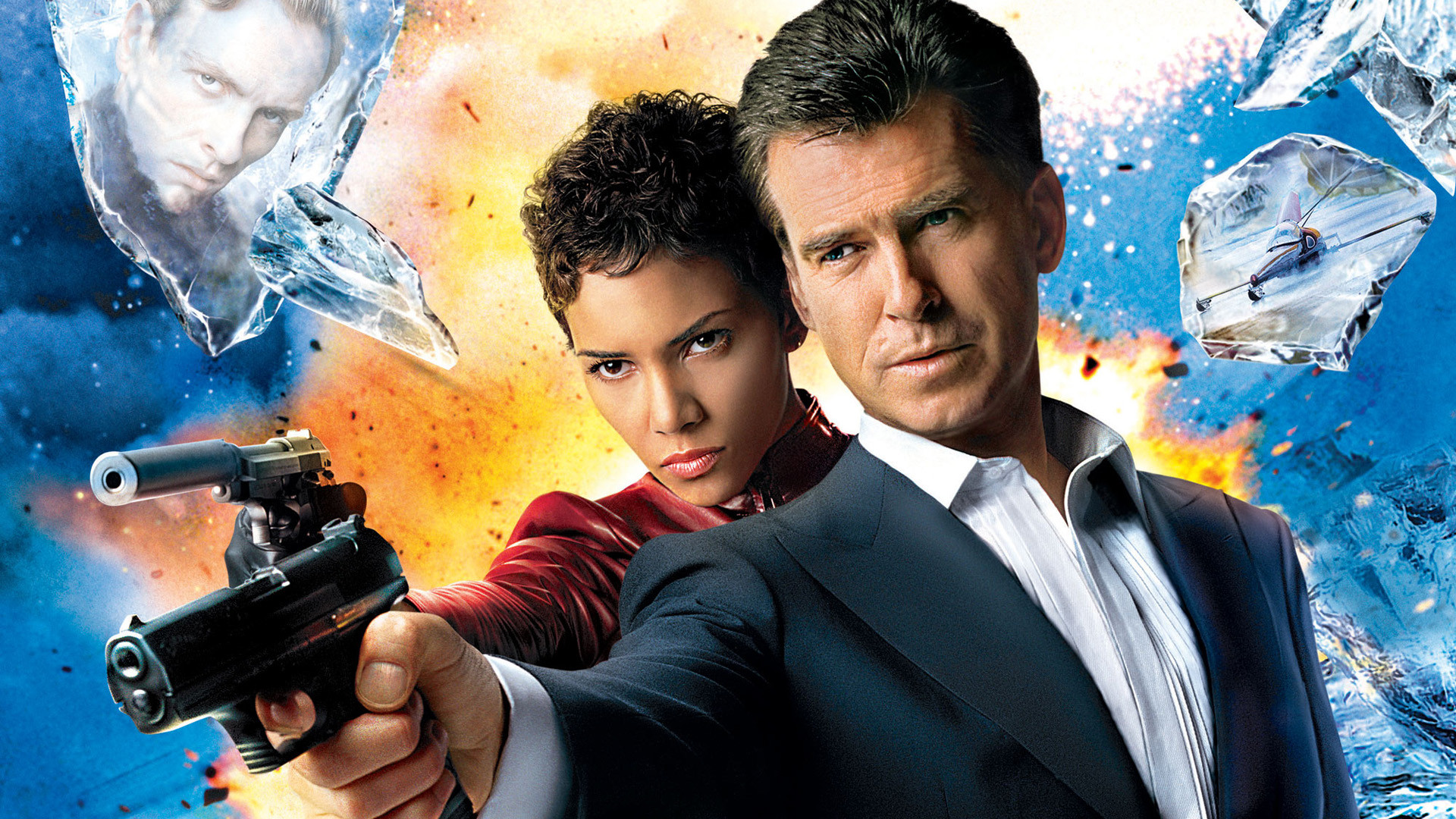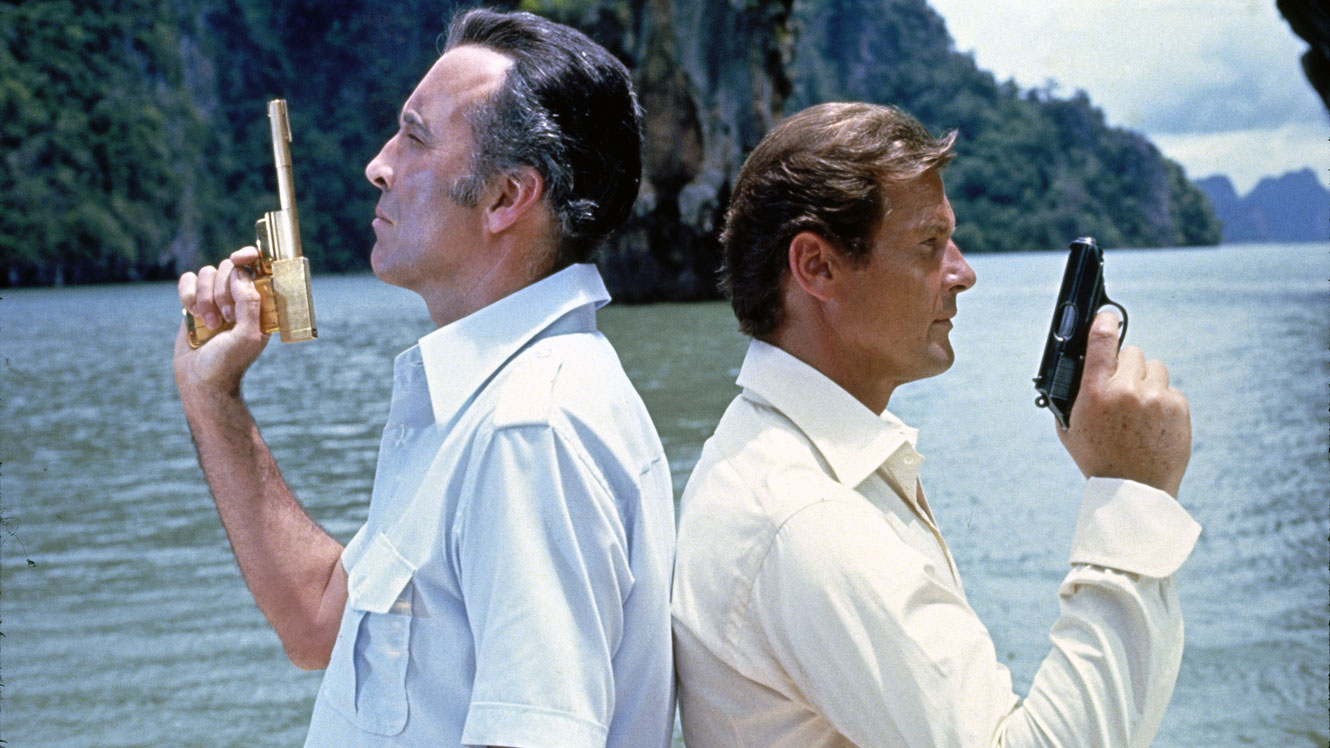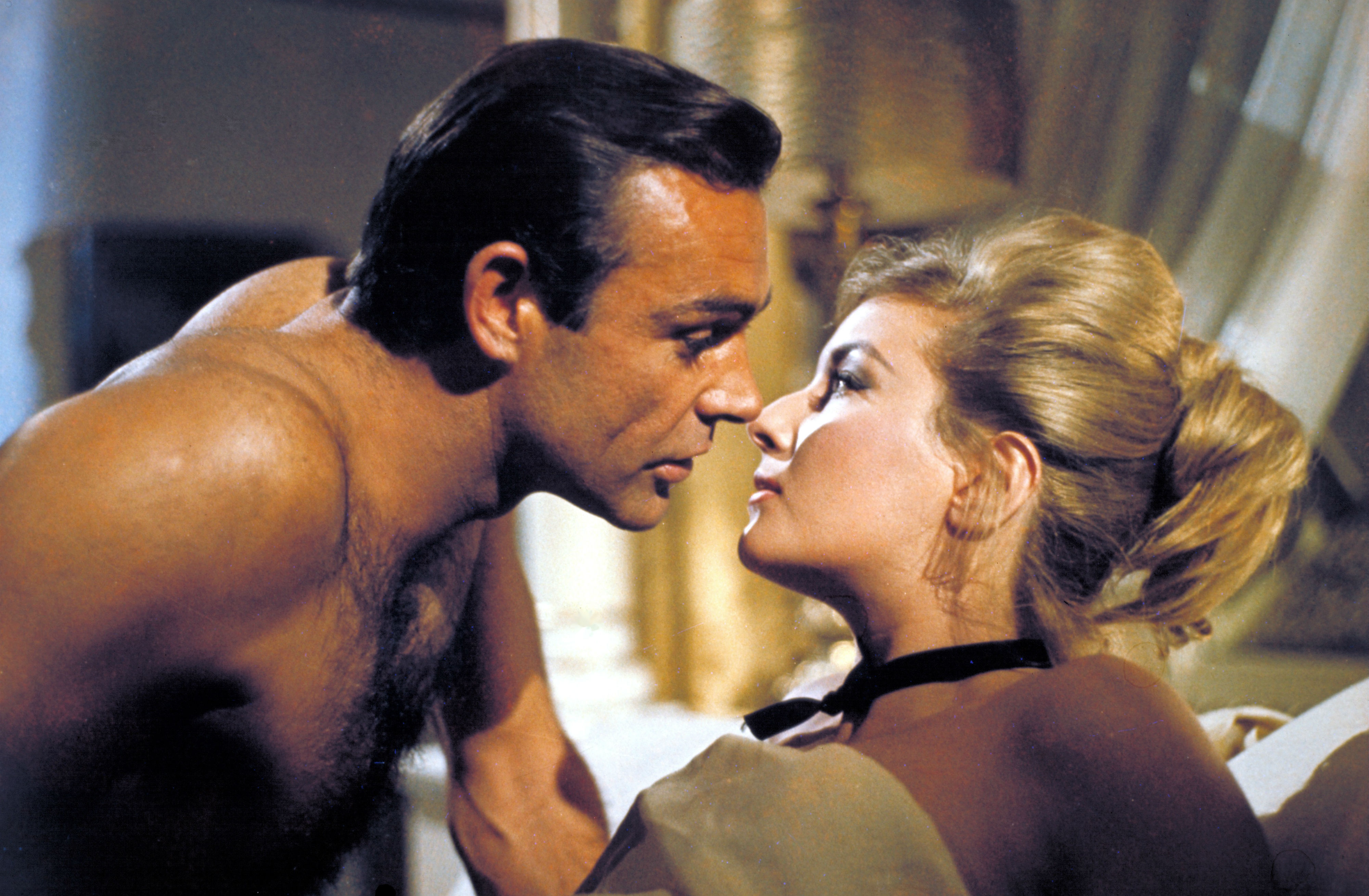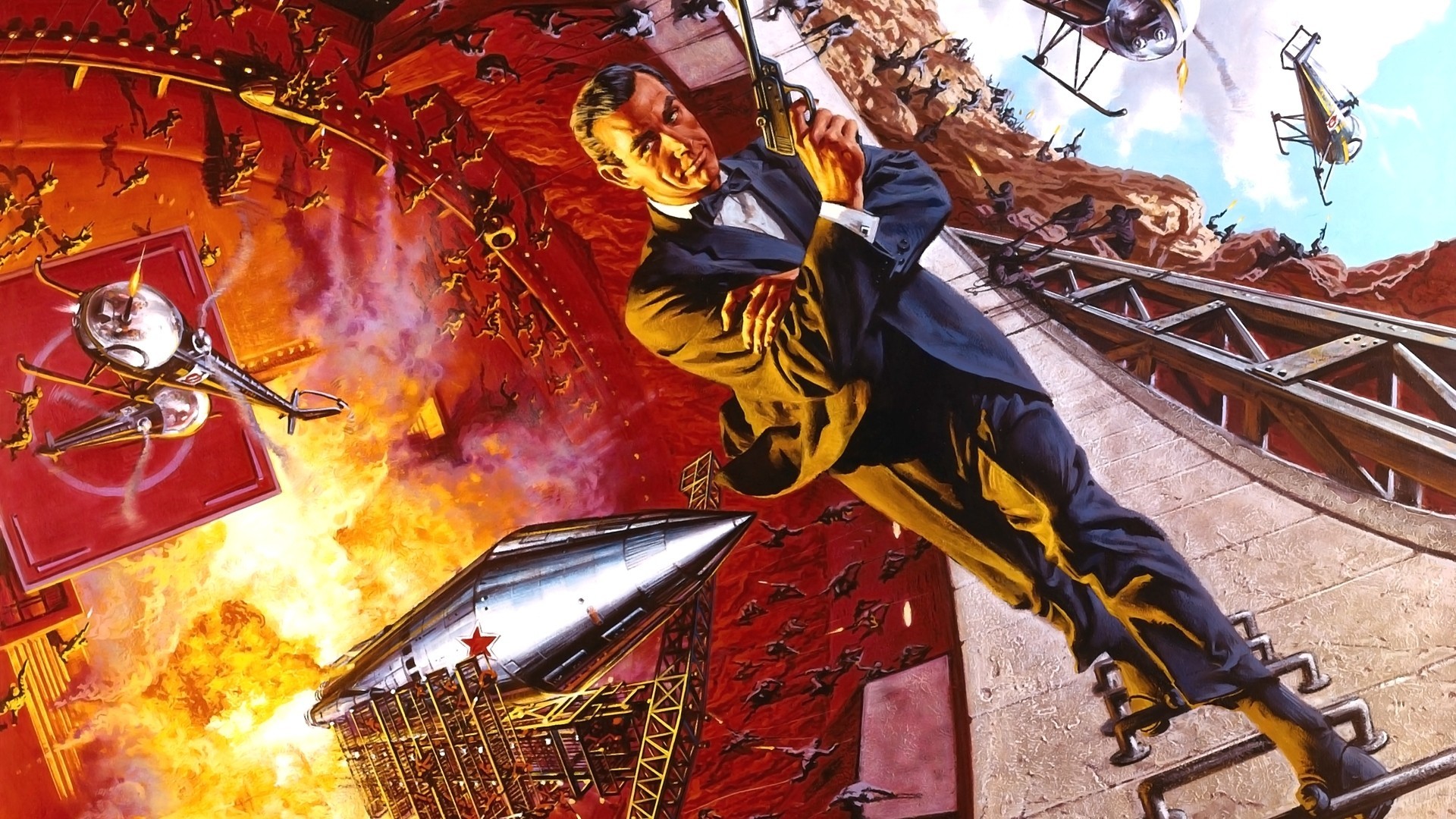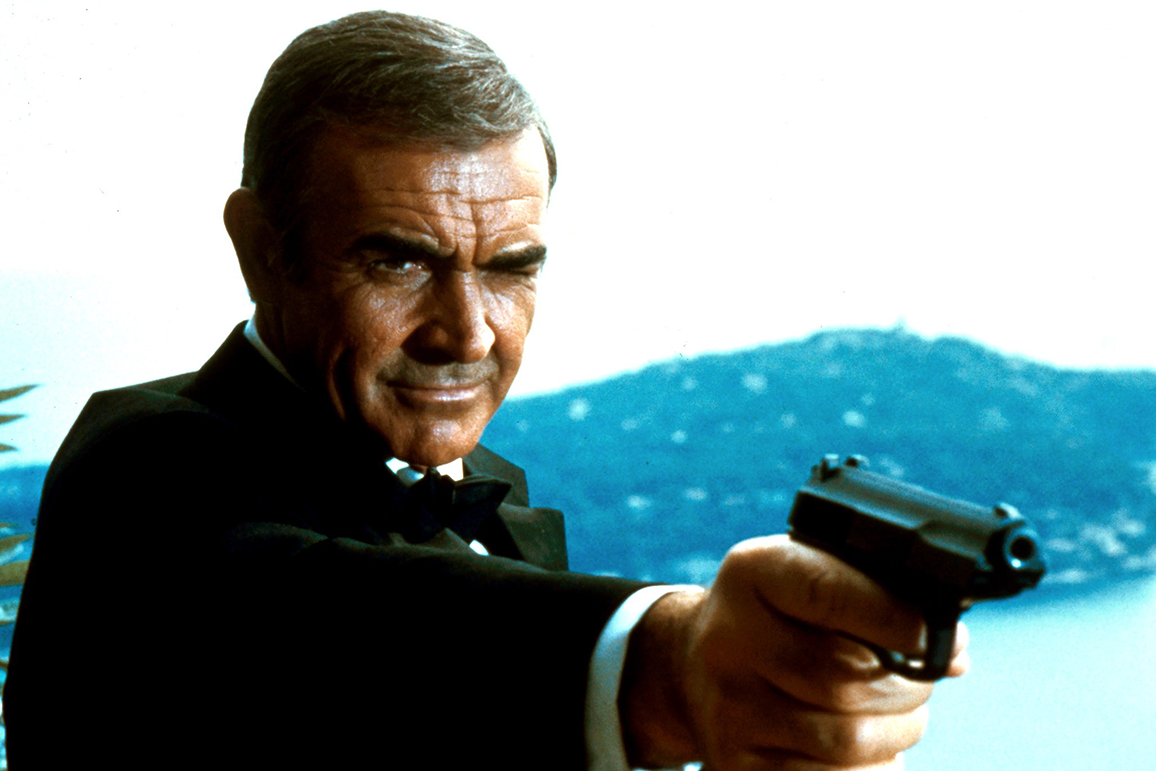Die Another Day (2002, Dir. Lee Tamahori):
For this review, we’re changing things up: I invited my colleague Urian Brown, the man behind the profane and funny Brown That Banana blog, to co-critique Die Another Day with me. First, Urian’s take:
Like many movies, I first watched Die Another Day when I was drunk. This was with my friend, who is an absolute authority on all things Bond, and was helping me fill in a couple of holes in my Bond movie history. Drunk is without a doubt the best way to watch this movie. It seems like it was written by drunks, directed by drunks and acted by drunks.
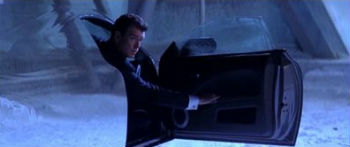 What sober person would think the best way to sneak into a country is to surf in?! With guns in the surf boards! What sober person would think an invisible car is a good idea? Wonder Woman’s invisible jet has given many children and man-children chuckles throughout time, so why would an invisible car be any different? Of course, said car is parked right outside of an ice hotel and left without a thought. It’s not intangible! Since it’s right out front, there would be a lot of bloody shins and confused people who would inevitably trip over it. Invisible car, dumb. Parking invisible car in front of hotel, super dumb. The kind of dumb you can only achieve through hours of copious alcohol intake.
What sober person would think the best way to sneak into a country is to surf in?! With guns in the surf boards! What sober person would think an invisible car is a good idea? Wonder Woman’s invisible jet has given many children and man-children chuckles throughout time, so why would an invisible car be any different? Of course, said car is parked right outside of an ice hotel and left without a thought. It’s not intangible! Since it’s right out front, there would be a lot of bloody shins and confused people who would inevitably trip over it. Invisible car, dumb. Parking invisible car in front of hotel, super dumb. The kind of dumb you can only achieve through hours of copious alcohol intake.
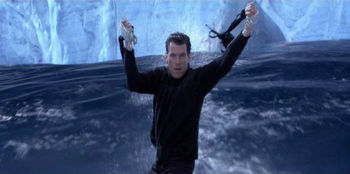 Of course, this all pales to what could be considered the most ridiculous action scene in any Bond movie, which is saying a whole hell of a lot — Bond being chased by a giant laser while riding in a souped-up, high-octane, super-sled car (or something like that). This is silly enough, but when the car goes over the cliff and he’s stuck like an ant with a hot magnifying glass beam coming its way, he rips the hood off, grabs the parachute, and PARACHUTE SURFS A GIANT WAVE TO SAFETY. It sounds dumb enough as a sentence, but the execution is even more absurd. Bond para-surfing,while super imposed on a giant, terribly fake-looking computer generated wave hearkens back to 1960s Beach Party surf scenes. Of course, this hilariously silly action scene is made all the more painful by the Bond theme playing over it, perfectly illustrating the general stupidity that permeates the entire affair.
Of course, this all pales to what could be considered the most ridiculous action scene in any Bond movie, which is saying a whole hell of a lot — Bond being chased by a giant laser while riding in a souped-up, high-octane, super-sled car (or something like that). This is silly enough, but when the car goes over the cliff and he’s stuck like an ant with a hot magnifying glass beam coming its way, he rips the hood off, grabs the parachute, and PARACHUTE SURFS A GIANT WAVE TO SAFETY. It sounds dumb enough as a sentence, but the execution is even more absurd. Bond para-surfing,while super imposed on a giant, terribly fake-looking computer generated wave hearkens back to 1960s Beach Party surf scenes. Of course, this hilariously silly action scene is made all the more painful by the Bond theme playing over it, perfectly illustrating the general stupidity that permeates the entire affair.
But with enough booze, as I mentioned above, this can be a very entertaining movie. It’s one hilarious scene after another. And not just the action scenes, there is plenty of knee-slappingly bad dialogue as well. Word of warning though: It’s a long movie, with a lot of crazy crammed into it. In fact, it feels like watching seven movies in one go, and if you don’t watch your alcohol intake, you’ll have a Bond-sized hangover in the morn!
— Urian Brown
The toughest thing comes from knowing what’s come before. You know, there’s been 19 movies, we’re all well aware of them. It’s great to be offered an opportunity to make a Bond movie, I really just loved it. All I wanted to do was just make a great Bond movie and not the worst Bond movie.
— Lee Tamahori
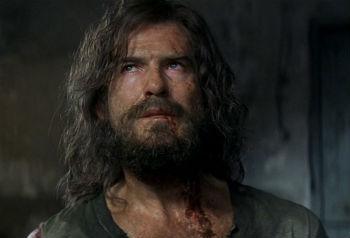 “While you were away, the world changed,” M tells James Bond early on in Die Another Day. Is she referring to the events of 9-11, which took place a year before this film’s release? Or was she speaking of the current cinematic landscape, in which competitors had absorbed the lessons from the Bond movies and expanded upon them to the point where 007 himself was just another franchise in a constellation of franchises? Certainly Bond was in no danger of disappearing; Pierce Brosnan’s three previous Bond entries had grossed over $1 billion. But as the series came up on its fortieth anniversary, producers Michael G. Wilson and Barbara Broccoli wanted to create something special to commemorate the occasion, as well as throw down the gauntlet: Nobody does it better.
“While you were away, the world changed,” M tells James Bond early on in Die Another Day. Is she referring to the events of 9-11, which took place a year before this film’s release? Or was she speaking of the current cinematic landscape, in which competitors had absorbed the lessons from the Bond movies and expanded upon them to the point where 007 himself was just another franchise in a constellation of franchises? Certainly Bond was in no danger of disappearing; Pierce Brosnan’s three previous Bond entries had grossed over $1 billion. But as the series came up on its fortieth anniversary, producers Michael G. Wilson and Barbara Broccoli wanted to create something special to commemorate the occasion, as well as throw down the gauntlet: Nobody does it better.
With great ambition came great hubris. New Zealander Lee Tamahori was best known for his very good, very brutal drama Once Were Warriors when he was hired to direct Die Another Day. At first blush he seemed a good choice to take Bond into earthier territory, but he surprisingly decided to kick out all the stops. CGI and special effects would be ramped up. The campy, over-the-top style of earlier Bond movies would be resuscitated, and taken to another level: ice palaces, laser satellites, high-tech battlesuits, that invisible car. References and motifs from previous Bonds would be thrown into the mix, as a valentine to the hardcore fans. Enough with the BMW product placement; Aston Martin product placement was back in style. Editor Christian Wagner would discard the usual Bond playbook and embrace slow motion, speed ramping, an occasional desaturated palette, flashy cuts — all the tricksy tactics that were defining early 2000s cinema. Meanwhile, Bond scribes Neal Purvis and Robert Wade had pulled inspiration from Ian Fleming’s Moonraker and its villain Hugo Drax, a Nazi who masquerades as a successful British industrialist to carry out his treacherous plans. As with The World Is Not Enough, the film has an unusual conceit intended to bust Brosnan out of the usual box: 007 captured and tortured in Korea, and later discarded by MI-6, operating as a free agent as he tracks down Korean assassin Zao (Rick Yune) and his mysterious employer, the fabulously wealthy Gustav Graves (Toby Stephens).
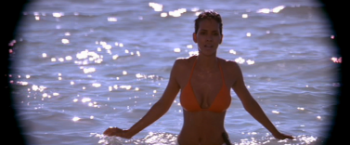 That synopsis might make it sound like Die Another Day takes itself at least somewhat seriously, but it’s clear what’s going on within the first few seconds of the movie, when Brosnan turns to fire in that familiar gunbarrel, and a CGI bullet comes whizzing straight at us. This is as close to a cartoon as Bond has gotten, and will probably ever get. The much-derided invisible car and windsurfing have already been discussed, but how about that dialogue? Virtually every utterance is a one-liner meant to be delivered with a raised eyebrow and a smirk. “I see you handle your weapon well,” says Madonna in a walk-on role as a fencing instructor (you can practically touch the vaseline oozing down the lens, masking her wrinkles). “I’m Mr. Kil,” a henchman introduces himself. “That’s a name to die for,” is Bond’s wince-worthy response. When Bond poses as an ornithologist (toting around a copy of James Bond’s Birds of the West Indies, one of the few subtle gags in the film) and runs into NSA agent Jinx Johnson (Halle Berry), the badinage would make Austin Powers blush. “Orinthologist…” Jinx purrs, her eyes rolling down towards Bond’s nether regions. “Wow. Now there’s a mouthful.” Berry was clearly brought on board for her box-office draw; she’s just as prominent as Brosnan on the posters, and there was even talk of spinning her character off into a separate series. Like most of the actors, she’s awful, but at least it’s a so-bad-it’s-kinda-entertaining awful.
That synopsis might make it sound like Die Another Day takes itself at least somewhat seriously, but it’s clear what’s going on within the first few seconds of the movie, when Brosnan turns to fire in that familiar gunbarrel, and a CGI bullet comes whizzing straight at us. This is as close to a cartoon as Bond has gotten, and will probably ever get. The much-derided invisible car and windsurfing have already been discussed, but how about that dialogue? Virtually every utterance is a one-liner meant to be delivered with a raised eyebrow and a smirk. “I see you handle your weapon well,” says Madonna in a walk-on role as a fencing instructor (you can practically touch the vaseline oozing down the lens, masking her wrinkles). “I’m Mr. Kil,” a henchman introduces himself. “That’s a name to die for,” is Bond’s wince-worthy response. When Bond poses as an ornithologist (toting around a copy of James Bond’s Birds of the West Indies, one of the few subtle gags in the film) and runs into NSA agent Jinx Johnson (Halle Berry), the badinage would make Austin Powers blush. “Orinthologist…” Jinx purrs, her eyes rolling down towards Bond’s nether regions. “Wow. Now there’s a mouthful.” Berry was clearly brought on board for her box-office draw; she’s just as prominent as Brosnan on the posters, and there was even talk of spinning her character off into a separate series. Like most of the actors, she’s awful, but at least it’s a so-bad-it’s-kinda-entertaining awful.
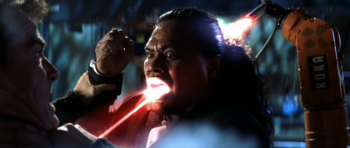 And those references to previous Bond movies? They’re everywhere, some of them cute, most of them pointless, all of them reminding us of how much better they did it the first time around. Berry emerges from the sea like Ursula Andress in Dr. No, swaying so hard you’re worried she might break her hipbone. Later she’s strapped to a table and threatened with a laser a la Goldfinger. A sexy assignation with Bond in his hotel room is filmed in secret, just as it was in From Russia with Love, except that the assignation in Russia was actually sexy. Graves skydives down to Buckingham Palace with a Union Jack parachute. “Diamonds are for everyone,” he later sneers at Bond, and we expect Shirley Bassey to break in on the soundtrack. Brosnan goes undercover at a health clinic and steals a grape while he’s at it, like Connery in Thunderball. Roger Moore’s daughter shows up as an airline stewardess. And the list goes on and on. Individually, these moments might amuse, but like they say, you don’t go home from a play buzzing about the stage curtains.
And those references to previous Bond movies? They’re everywhere, some of them cute, most of them pointless, all of them reminding us of how much better they did it the first time around. Berry emerges from the sea like Ursula Andress in Dr. No, swaying so hard you’re worried she might break her hipbone. Later she’s strapped to a table and threatened with a laser a la Goldfinger. A sexy assignation with Bond in his hotel room is filmed in secret, just as it was in From Russia with Love, except that the assignation in Russia was actually sexy. Graves skydives down to Buckingham Palace with a Union Jack parachute. “Diamonds are for everyone,” he later sneers at Bond, and we expect Shirley Bassey to break in on the soundtrack. Brosnan goes undercover at a health clinic and steals a grape while he’s at it, like Connery in Thunderball. Roger Moore’s daughter shows up as an airline stewardess. And the list goes on and on. Individually, these moments might amuse, but like they say, you don’t go home from a play buzzing about the stage curtains.
As has become par for the course for the Brosnan era, whatever initial interest the plot holds slips away in favor of bigger, noisier and flashier bangs. (Oh yeah, there’s a Big Bang joke, too. Guess what they’re really talking about.) When we’re not getting buffeted by explosions, we’re asked to buy into some incredible ideas. For instance, can you believe the Caucasian Graves is actually a renegade North Korean general who has undergone gene therapy (and gained a few inches of height in the process)? Can you believe that he has built up a fortune in diamonds, built and launched a secret laser satellite, and established a base in Iceland in just over a year? Not even the producers of the Harry Potter movies could work that fast. On a smaller note, can you believe Bond escaping MI-6 confinement by literally stopping his heart through pure willpower? (We all knew he was a cool cat, but apparently he’s a Zen master too.)
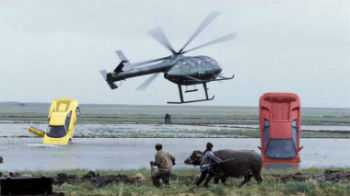 There is some fun to be had in seeing how the film breaks down (in both senses). The prologue follows the Brosnan model of overwrought action blended with the geopolitics of today (Evil North Koreans! Exploding hovercrafts! Even more exploding hovercrafts!), while a passage in Cuba actually makes an effort to scale things down to Connery-era dimensions, as Bond goes undercover armed only with a Ford Fairlane and a revolver. By the time we arrive at Graves’ lair in Iceland, with gadgets and chases galore, we’re back to the gaudy Roger Moore days. What none of these bits have is the charm and elegance that underpin the best Bond movies. Look over here and you’ll see ropey, garish CGI; look over there and you’ll see a set that has the scale but none of the awe of a Ken Adam creation. Tamahori reveals himself to be a tone-deaf orchestrator of this particular symphony — he seems to believe that what we’ve been missing from James Bond movies all these years is Halle Berry saying “Yo’ momma!”, or an Antonov jet breaking up into computer-generated bits of flak, or Toby Stephens in a Robocop suit shooting lightning bolts into Pierce Brosnan. The sheer expenditure and waste on display is staggering, the attempts to be hip with the new-fangled edits and effects plain embarrassing. It’s like your favorite past-his-prime uncle decked himself out in the latest youth fashions.
There is some fun to be had in seeing how the film breaks down (in both senses). The prologue follows the Brosnan model of overwrought action blended with the geopolitics of today (Evil North Koreans! Exploding hovercrafts! Even more exploding hovercrafts!), while a passage in Cuba actually makes an effort to scale things down to Connery-era dimensions, as Bond goes undercover armed only with a Ford Fairlane and a revolver. By the time we arrive at Graves’ lair in Iceland, with gadgets and chases galore, we’re back to the gaudy Roger Moore days. What none of these bits have is the charm and elegance that underpin the best Bond movies. Look over here and you’ll see ropey, garish CGI; look over there and you’ll see a set that has the scale but none of the awe of a Ken Adam creation. Tamahori reveals himself to be a tone-deaf orchestrator of this particular symphony — he seems to believe that what we’ve been missing from James Bond movies all these years is Halle Berry saying “Yo’ momma!”, or an Antonov jet breaking up into computer-generated bits of flak, or Toby Stephens in a Robocop suit shooting lightning bolts into Pierce Brosnan. The sheer expenditure and waste on display is staggering, the attempts to be hip with the new-fangled edits and effects plain embarrassing. It’s like your favorite past-his-prime uncle decked himself out in the latest youth fashions.
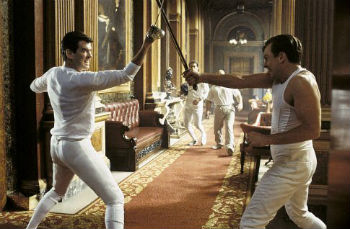 As wrongheaded and sloppily executed as Die Another Day is, you can’t say it’s boring. Every so often a good scene or two bubbles up. The title sequence by Daniel Kleinman actually advances the plot for once, as we watch Bond tortured by the North Koreans, the usual silhouetted nudes fading in and out like phantoms. Bond and Graves’ initial meeting is punctuated by a sprightly sword duel; in any other Bond movie, their brawl would seem a bit excessive, but here it’s positively subdued. Brosnan has clearly stopped giving a damn about whether he’s getting things right, and turns in his most relaxed outing as Bond. It’s ironic that his two best Bond-like performances have been in two non-Bond movies: The Thomas Crown Affair (2000) and The Tailor of Panama (2001). In both those films, he was allowed to be ambiguous, selfish, and lusty, and some of that devilishness has rubbed off on him here. His best moment comes early on, when he stands on a firing line, unsure whether he’s about to be freed or executed; the flicker of desperation on his face is compelling. Unfortunately, soon the Robinson Crusoe beard is shaved off, all the months of torture are forgotten, and he’s back to smirks and squints, his tuxedo resembling nothing so much as the world’s most expensive straitjacket.
As wrongheaded and sloppily executed as Die Another Day is, you can’t say it’s boring. Every so often a good scene or two bubbles up. The title sequence by Daniel Kleinman actually advances the plot for once, as we watch Bond tortured by the North Koreans, the usual silhouetted nudes fading in and out like phantoms. Bond and Graves’ initial meeting is punctuated by a sprightly sword duel; in any other Bond movie, their brawl would seem a bit excessive, but here it’s positively subdued. Brosnan has clearly stopped giving a damn about whether he’s getting things right, and turns in his most relaxed outing as Bond. It’s ironic that his two best Bond-like performances have been in two non-Bond movies: The Thomas Crown Affair (2000) and The Tailor of Panama (2001). In both those films, he was allowed to be ambiguous, selfish, and lusty, and some of that devilishness has rubbed off on him here. His best moment comes early on, when he stands on a firing line, unsure whether he’s about to be freed or executed; the flicker of desperation on his face is compelling. Unfortunately, soon the Robinson Crusoe beard is shaved off, all the months of torture are forgotten, and he’s back to smirks and squints, his tuxedo resembling nothing so much as the world’s most expensive straitjacket.
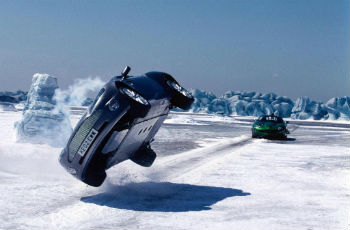 It can be argued that Die Another Day succeeds in what it sets out to do: as Mr. Brown suggests, it’s a beer-soaked bacchanalia, a big tribute party in which everyone can have fun as long as you can check in your brain and your soul at the door. Drunk on its own iconography, the Bond machine had truly become a machine, spitting out clichés with assembly-line predictability. It didn’t make for an artistic triumph, but it sure made bank at the box office, where the film racked up $70 million more than its predecessor. The movie would also mark another turning point for the franchise; beset by financial difficulties, MGM would go into hibernation, and eventually partner up with Sony to produce the next set of films in the series. During the four-year interim before the next entry, the world would change yet again: fellows like Jason Bourne and Jack Bauer would reshape the spy game, necessitating a new approach, and the dumping of Brosnan. His legacy is a tricky one to judge — while there is no doubt his presence made his movies financially (and even critically) successful, will they hold up over time? Settling for a middle-of-the-road portrayal, he was never the most compelling Bond, but he also had the misfortune of starring in some of the most generic, muddled films in the series, with the great steaming mess of Die Another Day as a capper. Is Die truly the worst Bond movie though? It depends on how you grade your curve — you may find a place for it in your heart if you can extract camp value from its awfulness. However misguided the film is, it does have a hypnotic pull, like a car crash in slow motion. Whether you feel like the crash-test dummy in the car will determine the intensity of your reaction.
It can be argued that Die Another Day succeeds in what it sets out to do: as Mr. Brown suggests, it’s a beer-soaked bacchanalia, a big tribute party in which everyone can have fun as long as you can check in your brain and your soul at the door. Drunk on its own iconography, the Bond machine had truly become a machine, spitting out clichés with assembly-line predictability. It didn’t make for an artistic triumph, but it sure made bank at the box office, where the film racked up $70 million more than its predecessor. The movie would also mark another turning point for the franchise; beset by financial difficulties, MGM would go into hibernation, and eventually partner up with Sony to produce the next set of films in the series. During the four-year interim before the next entry, the world would change yet again: fellows like Jason Bourne and Jack Bauer would reshape the spy game, necessitating a new approach, and the dumping of Brosnan. His legacy is a tricky one to judge — while there is no doubt his presence made his movies financially (and even critically) successful, will they hold up over time? Settling for a middle-of-the-road portrayal, he was never the most compelling Bond, but he also had the misfortune of starring in some of the most generic, muddled films in the series, with the great steaming mess of Die Another Day as a capper. Is Die truly the worst Bond movie though? It depends on how you grade your curve — you may find a place for it in your heart if you can extract camp value from its awfulness. However misguided the film is, it does have a hypnotic pull, like a car crash in slow motion. Whether you feel like the crash-test dummy in the car will determine the intensity of your reaction.
— Ho Lin
